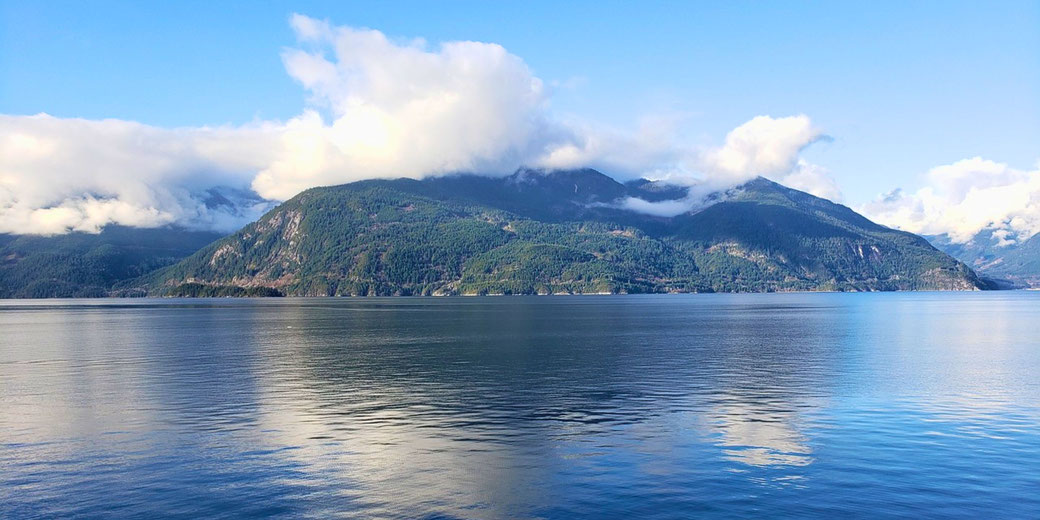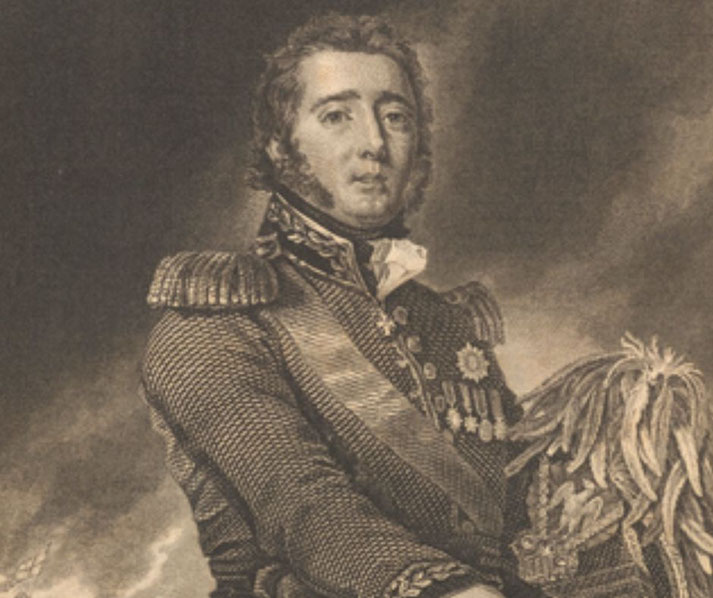How hundreds were tricked into spending millions to live in a country that never existed

In the early 19th century, a charismatic Scotsman named Gregor MacGregor concocted one of history's most audacious frauds, orchestrating a scheme that lured hundreds of unsuspecting settlers to a fictional land.
This land, Poyais, was promised to be a tropical paradise, rich in resources and ripe for development. MacGregor, embellishing his tales with vivid descriptions and forged documents, painted a picture so alluring that families invested their fortunes and futures into this phantom country.
But what drove a man like MacGregor to fabricate an entire nation, and how did he convince so many to believe in it?
What was the fate of those who embarked on this ill-fated journey?
And how did this monumental deception eventually unravel?
Who was Gregor MacGregor?
Gregor MacGregor was born on December 24, 1786, in Glengyle, Scotland, into the MacGregor clan, a family with a storied history in the Scottish Highlands.
Despite his noble lineage, MacGregor's early life was relatively modest. His family's fortunes had dwindled, and they were no longer among the most influential in the region.
This modest upbringing, however, did not diminish young Gregor's ambitions.
From an early age, he showed a penchant for grandeur and a flair for the dramatic, traits that would later define his extraordinary life.
In 1803, at the age of 16, MacGregor began his military career by joining the British Army.
His service started amid the Napoleonic Wars, a period of significant military conflict across Europe.
MacGregor’s early military experience was conventional, serving in various regiments and demonstrating a degree of competence.
He was stationed in Gibraltar for a time, where he honed his military skills and gained exposure to international affairs.
His life took a turn in 1810 when he traveled to Venezuela to join the fight for independence against Spanish rule.
It was in South America that MacGregor’s taste for adventure and his ability to weave compelling narratives became evident.
He quickly rose through the ranks in the Venezuelan and Colombian armies, largely due to his bravery in battle and his knack for self-promotion.
He styled himself as a dashing, courageous leader, often embellishing his military exploits to enhance his reputation.
In 1812, MacGregor married Josefa Antonia Andrea Aristeguieta y Lovera, a relative of the revolutionary leader Simón Bolívar.
This marriage bolstered his status and connections in South American revolutionary circles.
Despite his rising star, MacGregor's career in South America was marked by a mix of genuine military successes and failures, often retreating from the latter with his reputation somehow intact or even enhanced.
By the time he left South America in 1820, MacGregor had transformed from a Scottish adventurer into a self-fashioned hero of the Latin American independence movements.
However, his departure from South America was not solely a choice of returning home but was also influenced by his waning influence and mounting military challenges.
How MacGregor created the imaginary country of Poyais
The creation of Poyais, an entirely fabricated country, was the centerpiece of Gregor MacGregor's grand scheme.
After his return from South America in 1820, MacGregor arrived in London with a plan that was as audacious as it was imaginative.
He claimed to be the Cazique, or prince, of Poyais, a supposedly sovereign nation located on the Mosquito Coast, near present-day Honduras and Nicaragua.
This land, he asserted, was a fertile paradise, waiting for British settlers and investors to unlock its potential.
MacGregor’s depiction of Poyais was detailed and persuasive. He described it as a land of rolling hills, rich soil, and bountiful resources, including gold-laden rivers and dense, valuable forests.
The climate was said to be perfect for agriculture, and the native people were portrayed as friendly and welcoming to European settlers.
To lend authenticity to his claims, MacGregor produced a set of elaborately forged documents: land grants, a constitution, and a code of laws for Poyais.
He even created a flag, currency, and other national symbols for the fictional nation.
Perhaps most convincingly, in 1822, MacGregor published a guidebook titled "Sketch of the Mosquito Shore, including the Territory of Poyais".
This guidebook offered detailed descriptions of the geography, climate, and supposed history of Poyais.
It painted a picture of a utopian society, with pre-established infrastructure, including a capital city named St. Joseph, complete with a bank, an opera house, a cathedral, and palatial government buildings.
The location MacGregor had chosen for Poyais did indeed exist geographically, but it was nothing like the paradise he described.
The Mosquito Coast was a remote and inhospitable region, largely unexplored and undeveloped.
Its dense jungles, swamps, and the absence of the infrastructure made it a challenging environment for settlement, a stark contrast to the idyllic picture MacGregor had painted.

The sophistication of the Poyais scam
The Poyais scheme, orchestrated by Gregor MacGregor, was a masterclass in deception and marketing, exploiting the early 19th-century fascination with exotic lands and the promise of easy wealth.
MacGregor's scheme was multifaceted, targeting both settlers seeking a new life and investors looking for profitable opportunities.
After establishing the credibility of Poyais through detailed descriptions, maps, and a guidebook, he proceeded to the next phase of his plan: selling land and government bonds in the fictional country.
In London, MacGregor began issuing and selling land certificates for Poyais, offering plots at attractively low prices.
These certificates were meticulously crafted to appear legitimate, complete with official-looking seals and signatures.
Alongside these land sales, he also issued Poyaisian government bonds, promising high returns on investment.
MacGregor's London campaign to promote Poyais was sophisticated and comprehensive.
He organized lavish banquets and meetings, where he regaled potential investors with tales of Poyais’ splendor.
In these meetings, he distributed beautifully crafted maps and charts of Poyais, further enhancing the illusion.
The London financial community, intrigued by the prospect of a new and lucrative colonial venture, embraced MacGregor’s narrative.
Investors eagerly bought Poyaisian government bonds, and prospective settlers began making plans to emigrate to this new land of opportunity.
The tragic outcomes for the people who arrived in 'Poyais'
In 1822, buoyed by the promises of a prosperous new life in the idyllic land of Poyais, the first group of settlers, comprising about 250 people, prepared to embark on their voyage.
They were a diverse group, consisting of families, artisans, farmers, and soldiers, all united by the dream of a better life in what they believed to be a developed and welcoming country.
In September 1822, the settlers boarded the Honduras Packet, the first ship chartered to take them to Poyais.
They carried with them their possessions, tools for building and farming, and high hopes.
The journey across the Atlantic was filled with anticipation. MacGregor's had provided them with a guidebook, maps, and supposed letters from settlers already thriving in Poyais, which they studied eagerly, envisioning their new lives.
However, upon their arrival in the Mosquito Coast in early 1823, the settlers were met with a harsh reality that starkly contrasted with MacGregor's descriptions.
Instead of a developed city with buildings, roads, and welcoming inhabitants, they found an uninhabited, dense jungle with no signs of the promised infrastructure.
The land was not the fertile paradise they had been promised but rather a challenging environment, unsuitable for immediate settlement and cultivation.
Stranded and disillusioned, the settlers struggled to survive. They faced numerous hardships, including disease, lack of food, and the harsh conditions of the unfamiliar terrain.
The tropical climate and diseases like malaria took a heavy toll, and many settlers fell ill.
With no infrastructure or support system, they were left to fend for themselves in a land that offered none of the promised prosperity.
As word of the settlers' plight reached the outside world, rescue efforts were organized.
Another ship, the Mexican Eagle, arrived later in 1823 with more settlers, only to find the dismal conditions of the first group.
Rescue missions were launched, and by mid-1824, most of the surviving settlers were taken back to Britain.
However, the return journey brought little relief, as many had lost their life savings and were returning to a society that viewed them with a mix of sympathy and scorn.
What happened after the scam was revealed?
For the investors who had bought into MacGregor's scheme, the financial losses were significant.
Many had invested substantial sums in the purchase of Poyaisian land and government bonds, enticed by the promise of high returns and the allure of a new colonial venture.
The revelation that Poyais was a fiction and their investments worthless led to financial ruin for some and a general loss of confidence in speculative investments.
The wider societal impact of the Poyais scheme was notable in its influence on public perception of colonial ventures.
The scandal highlighted the dangers of speculative investments in distant lands and served as a cautionary tale about the perils of unchecked greed and gullibility.
It also cast a shadow on legitimate colonial enterprises, as the public became more skeptical of overseas investment opportunities.
Legally, the consequences for Gregor MacGregor were surprisingly minimal.
Despite the scale of his deception, MacGregor faced little in the way of legal repercussions.
He was arrested in 1823 upon his return to Britain but was soon released due to a lack of evidence and the ambiguous legal status of his actions.
The legal systems of the time were ill-equipped to deal with such an unprecedented case of fraud, particularly one involving a fictitious country.
What happened to Gregor MacGregor?
After his release from prison in Britain, MacGregor left for France in the mid-1820s, only to attempt to replicate his Poyais scheme there.
In France, however, MacGregor's luck was less favorable. He was arrested in 1826 and subsequently tried and convicted for fraud.
His imprisonment, though, was brief, and upon his release, he astonishingly continued to promote the existence of Poyais, still attempting to draw investors and settlers to the nonexistent country.
In the latter part of the 1820s, MacGregor returned to Venezuela, where he had previously held a military rank during the country's fight for independence.
The Venezuelan government, recognizing his earlier contributions to their struggle, granted him a pension.
He spent his final years in Caracas, largely fading from the public eye. He died on December 4, 1845, in relative obscurity, a stark contrast to the notoriety and fame he once enjoyed in Europe.
MacGregor’s legacy is a complex one. On one hand, he is remembered as a master con artist, responsible for one of the most audacious and elaborate frauds in history.
His creation of Poyais and the subsequent scheme that lured hundreds of settlers and investors into investing in a nonexistent country is a story that continues to fascinate as an extreme example of deception and gullibility.
On the other hand, MacGregor's life is also a testament to the spirit of his times, an era marked by a fascination with unknown lands and the allure of quick fortune.
His ability to exploit these sentiments, coupled with his charismatic personality and talent for storytelling, made him a figure that, while infamous, also reflected the adventurous and often reckless spirit of the age of exploration and colonial expansion.
What do you need help with?
Download ready-to-use digital learning resources
Copyright © History Skills 2014-2025.
Contact via email
With the exception of links to external sites, some historical sources and extracts from specific publications, all content on this website is copyrighted by History Skills. This content may not be copied, republished or redistributed without written permission from the website creator. Please use the Contact page to obtain relevant permission.





